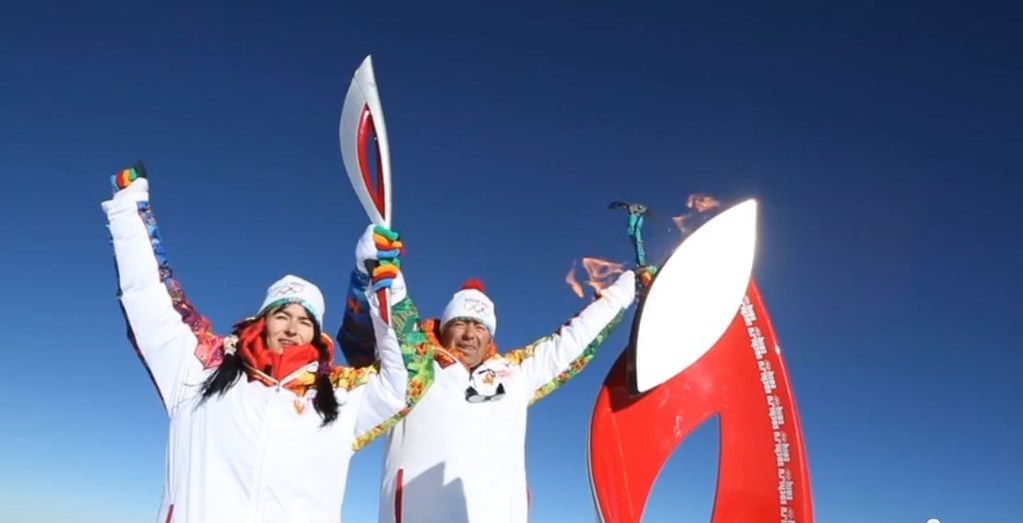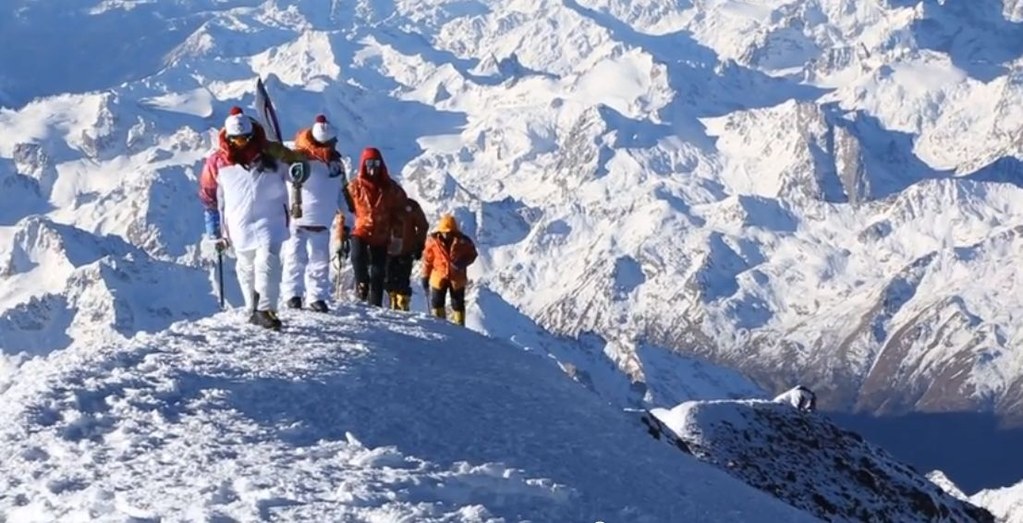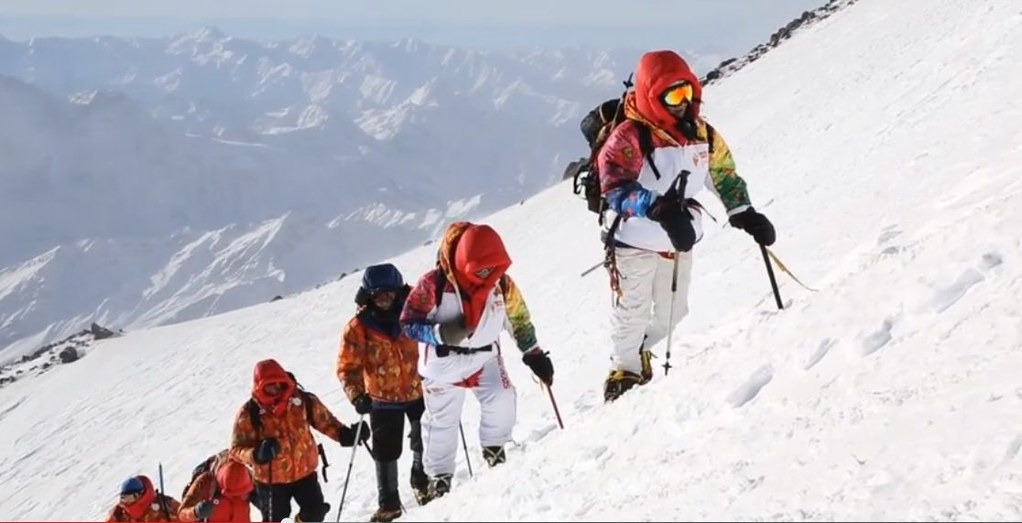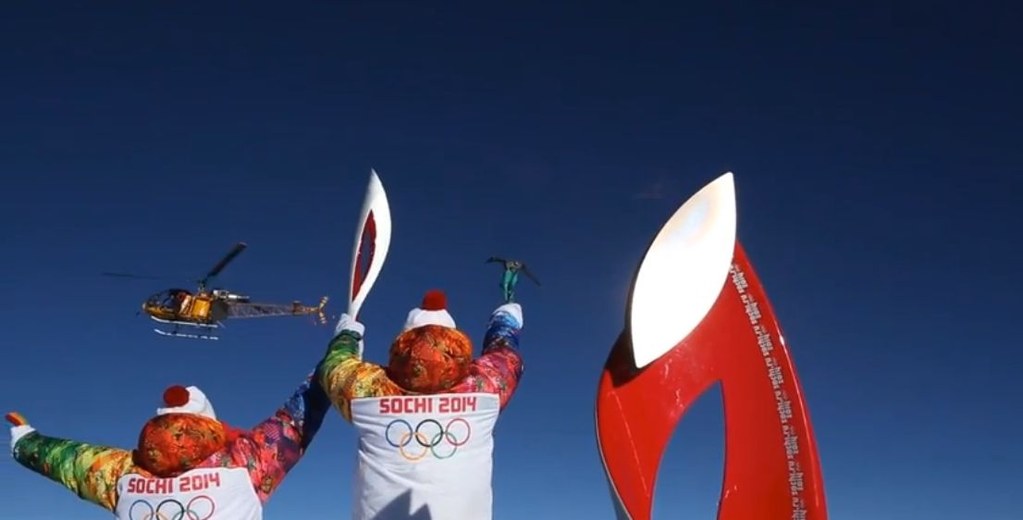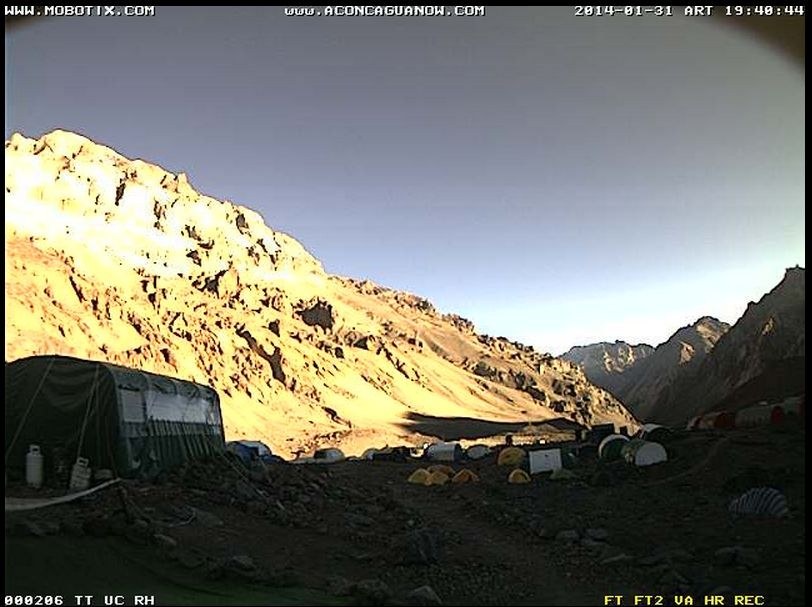All news: 1 February 2014
The Olympic flame has been lit at Mt. Elbrus. Nice view of Elbrus summit
Elbrus.
At the end of October 2013, an ascent of the western summit of the "two-peaked mountain" was made by experienced mountain climbers: Karina Mezova, who has climbed to the summit of Mount Elbrus 130 times, and Abdul-Khalim Elmezov, President ...
At the end of October 2013, an ascent of the western summit of the "two-peaked mountain" was made by experienced mountain climbers: Karina Mezova, who has climbed to the summit of Mount Elbrus 130 times, and Abdul-Khalim Elmezov, President of the Climbing Federation of the Republic of Kabardino-Balkaria. Both climbers are close friends of the 7 Summits Club, both are Everest summiters.
http://www.youtube.com/watch?v=dCA4W9ltGKA&feature=youtu.be
Russia Today
http://rt.com/news/olympic-torch-mount-elbrus-511/
A handout picture taken during the Sochi 2014 Winter relay on October 25, 2013 and released by the Sochi 2014 Winter Olympics Organizing Committee, shows torchbearers carrying an Olympic torch at the Elbrus Mount in Russia's North Caucasus region. (AFP Photo/Sochi 2014 Winter Olympics Organizing Committee)
With the Winter Olympic Games in Sochi just round the corner, the Olympic Flame has been lit at the summit of the highest point in Europe, Mount Elbrus, which lies in the Greater Caucasus mountain range.
During the relay, the longest in Olympic history, the Olympic torch has been seen at the International Space Station, in outer space, on the bottom of Lake Baikal, at the main Buddhist temple and monastery in the Republic of Buryatia, on top of Avachinsky volcano on the Kamchatka Peninsula, and at the North Pole.
A team of five experienced mountaineers has also reached the summit of Mount Elbrus with the Olympic Flame in a special lantern, the Torch Relay Committee revealed on Saturday.
Although commonly known as a mountain, Mount Elbrus is in fact a layered volcano, which last erupted about 2,000 years ago. It has long been a challenge for climbers from across the world, with the first documented ascent of the eastern summit in 1829. The slightly higher western peak was first conquered in 1874.
The plan to take the Olympic Flame to the western peak of Elbrus, at an altitude of 5,642 meters above sea level, was developed separately from the main Olympic Torch Relay route to have a chance to choose the best possible weather conditions for the climb.
At the end of October 2013, a Russian team of mountain climbers made an ascent of the western summit of Elbrus. One of the mountaineers, Karina Mezova, has climbed to the summit of Elbrus 130 times; the other, the president of the Climbing Federation of the Republic of Kabardino-Balkaria, Abdul-Khalim Elmezov, has climbed Elbrus more than 220 times.
A total of 14,000 torch bearers have taken part in the 2014 Olympic Torch Relay, with the oldest participant aged 101. Meanwhile, the average pace of the Olympic Torch Relay is 534 kilometers a day, with a variety of means of transportation available to ship it, including the traditional Russian three-horse sled, the troika, dog sled and reindeer sled, a hot air balloon, an amphibious motorboat, a medieval “ladya” Russian sailboat, a motorbike, a water scooter, a wakeboard, a ski bike, a snowmobile, as well as a snow-and-swamp buggy, just to name a few.
The 2014 Olympic Torch Relay has been hosted by 135 cities located in all of Russia’s 83 federal subjects. The longest nonstop leg of the relay spanned 2,055 kilometers, between the cities of Norilsk and Yakutsk in the Russian Far East.
On the official site of the Torchrelay of Sochi2014
http://torchrelay.sochi2014.com/en/photo-and-video#video=the-olympic-flame-has-been-lit-at-mt-elbrus
The Group of the 7 summits Club completed the acclimatization period and resting before the summit assault
Aconcagua.
Hello! It is Vladimir Kotlyar, the guides of the expedition to Aconcagua. Today we went from Nido de Êîíäîðåñ to Cholera, it was for acclimatization reason. We went briskly enough, went down and now we are on the Plaza de Mulas. We are ...
Hello! It is Vladimir Kotlyar, the guides of the expedition to Aconcagua. Today we went from Nido de Êîíäîðåñ to Cholera, it was for acclimatization reason. We went briskly enough, went down and now we are on the Plaza de Mulas. We are resting, eating etc. In General, the group restores strength prior to storm the summit. We are all well. Tomorrow we plan to have a day of rest. The weather is good, that's good. Mow it is windy. Weather forecasters promise the next three days strong wind. On the scheduled day of the ascent it should be “a window”. Goodbye!
